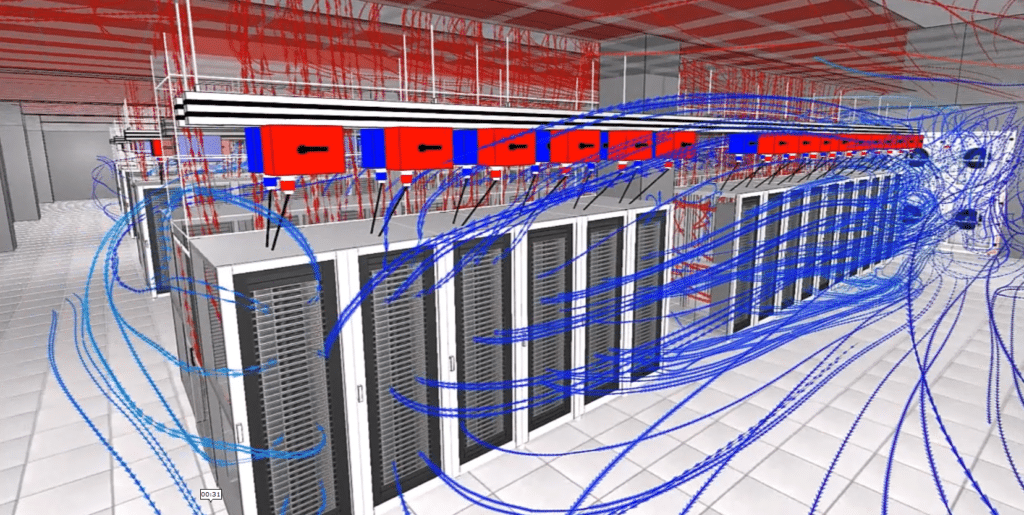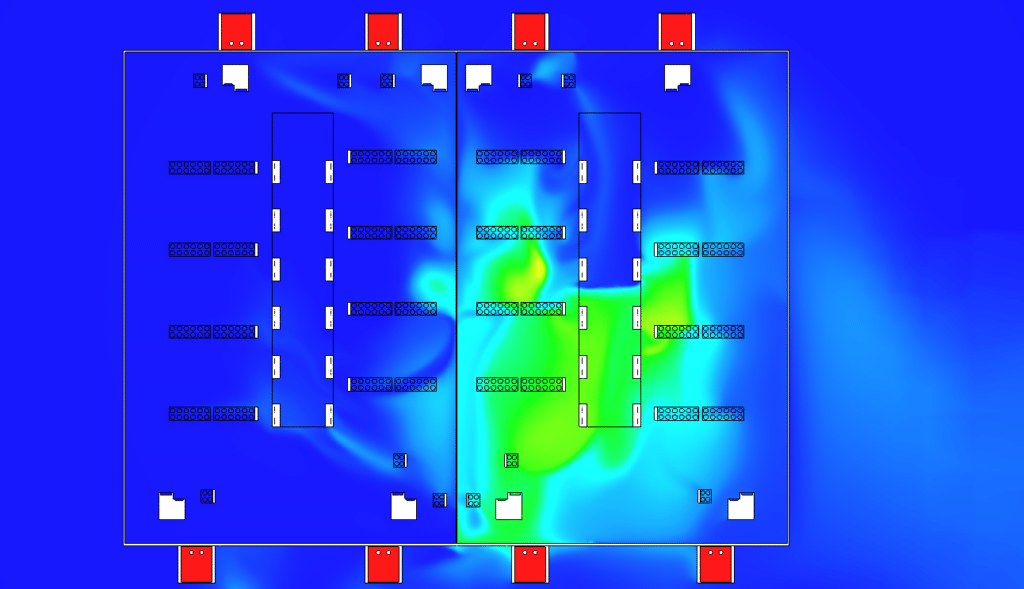Home » Data Center » External CFD simulation for data center » Data Centers – DC15.1 & DC15.2 – External
Data Centers – DC15.1 & DC15.2 – External
Study and visualize external heat and air flows in hyperscale data centers
EOLIOS has applied its technical know-how to analyze and represent data centers’ external heat and air flows.
Data Centers - DC15.1 & DC15.2 - External
Year
2024
Customer
NC
Location
Italy
Typology
Data Center
Continue navigation :
Our other projects :
Latest news :
Technical files :
Expertises :
External CFD simulation of a hyperscale Data Center
Analysis of heat loss
EOLIOS ingénierie, one of Europe’s leading providers of CFD modeling services for data centers, contributed its technical expertise in the understanding and modeling of external thermal and aeraulic exchanges at a data center in France, in relation to generator heat release, by carrying out CFD studies.
In the very large-scale datacenter environment, cooling system standards capable of meeting the evolving needs of the IT industry are required due to the increasing density of IT equipment (over 10 kW / rack).
Cooling to remove heat from high-density IT equipment is a key consideration for data centers. These calories are evacuated by a series of systems placed in high concentration on the roof.
Description of the external CFD simulation mission for a hyperscale data center
This analysis examines the exhaust plume from a series of generators for a data center. The aim of the process is to determine whether the thermal exhaust from these systems can contaminate the supply air through looping.
To achieve this, our EOLIOS engineers used CFD numerical calculations to simulate the thermo-aerodynamic behavior of the various phenomena taking place outside the model.
A multitude of parameters were taken into account by our experts: radiant wall temperatures, thermal draft from manufacturing processes, wind pressure, internal resistance to vertical airflow; location and flow resistance characteristics of envelope openings; local terrain and the immediate impact of the building structure on the wind; and the presence of mechanical systems stirring air around processes.
We will verify the design of a system to improve the air mixing of air coolers located on the roof of technical rooms occupied by generators.
Identification of recirculation zones via high-density current traces
Creating a digital twin
The digital twin of the data center studied in CFD includes air volumes, all generator sets, external air coolers and walls in contact with the exterior. All HVAC systems are modeled.
The digital twin also includes the surrounding buildings, which have been carefully modeled in order to obtain the most accurate thermal plume evolution for different wind directions, and thus quickly identify potential thermal problems. By analyzing these results from a global or local perspective, we can propose solutions tailored to the various problems identified.
All the generators were CFD-modeled using the digital twin. Motors, stacks, heat extraction fans, chimneys, equipment systems and electrical cabinets are all taken into account in the study. The refinement of the CFD resolution provides a complex temperature distribution that is representative of reality. Some specific phenomena were identified during the study, which led to design work to resolve these issues.
Capture of external thermo-aerodynamic phenomena
Initial simulations have enabled us to capture the main thermal phenomena involved in datacenter studies, as well as the various phenomena inherent in cooling systems. Capturing these phenomena enabled us to quickly start looking for solutions to the problems identified. The use of 3D models during the research phase enabled us to study and design the various solutions envisaged.
CFD simulations have made it possible to represent high-temperature zones at all points in space. This property has enabled us to precisely identify the looping zones between the air expelled by the air coolers and the air they suck back in. The results obtained led us to conclude that the thermo-aerodynamic dynamics of the original design could lead to overheating of the cooling system. The results obtained enabled us to review the original design and implement appropriate solutions.
Why use CFDs?
By using a CFD study, it is possible to analyze, check and correct, if necessary, potential errors during the design. This fast, precise method reduces design time and ensures concrete and reliable results. Integrating a CFD study during its design stage means calling on professionals to ensure that no problems arise in the future.
Continue on this topic
Video summary of the study
Discover other projects
Engineering smoke extraction in a data center
External & internal CFD – Data Center Hyperscale
CFD Optimization – Data Center
Data Center – DC28 – Internal
Pressure loss study – Generator – Data center
Data Center – PA 22 – External
Technical premises – Data Center
Cooling optimization – Data Center
Data Centers – DC15.1 & DC15.2 – External
Data Center – Paris
Data Center – GAZ NOVEC
Data center – DC25 – Internal
Data center – DC17 – Internal
Data Center – DC10 – Internal
Data center – DC25 & DC26 – External
Data center – D14 – External
Data center – DC17 – External
DC23 – External












